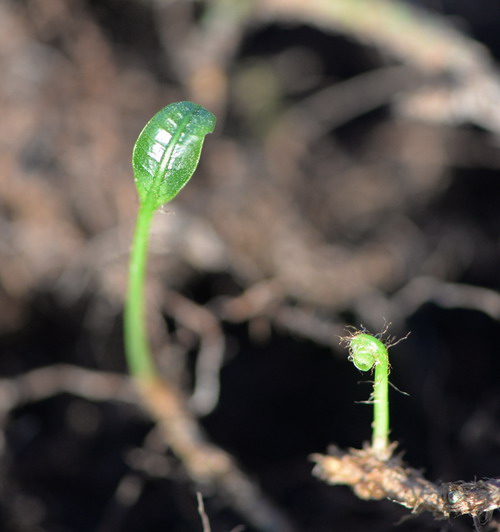|
|
|
| Clonal integration is more Important for facultative epiphytic ferns in forest canopies |
 |
Text Size: A A A |
|
In both epiphytic and terrestrial habitats, some clonal facultative epiphytes increase their survival and growth through clonal integration (resource sharing between connected ramets of clonal plants). As resources such as water and nutrients may be more limited and heterogeneously distributed in epiphytic than in terrestrial habitats, effects of clonal integration on survival and growth of facultative epiphytes are expected to be greater in epiphytic habitats (forest canopies) than in terrestrial habitats (forest understories). To test the effects of clonal integration on survival and growth of facultative epiphytes, Prof. LIU Wenyao and his team of Xishuangbanna Tropical Botanical Garden (XTBG) conducted two field experiments with the evergreen, facultatively epiphytic, rhizomatous fern Selliguea griffithianain in both epiphytic and terrestrial habitats in a montane moist evergreen broadleaved forest in south-west China. They asked whether clonal integration increased survival and growth of S. griffithiana in the dry season in the montane moist evergreen broadleaved forest. They then studied whether the effect was greater in epiphytic habitats than in terrestrial habitats. They also asked whether younger ramets benefited more from clonal integration than older ramets, and whether such an effect depended on habitat. The researchers examined the effects of rhizome connection (i.e. with vs. without clonal integration) on survival and growth of single ramets of S. griffithiana from both epiphytic habitats (in the interstices of bark and in the junctions of trunks or branches of host trees) and terrestrial habitats (on the ground of the forest understorey).of rhizome connection on performance of ramets. They selected 20 small plots (10 × 10 cm2) and 20 large plots (20 × 20 cm2) to test the effects of rhizome connection on performance of ramets. They used a generalized linear model to test effects of rhizome connection (with vs. without clonal integration), habitat (epiphytic vs. terrestrial) and age (old vs. young) on the survival probability of single ramets. Both the single-ramet and the plot experiments showed that rhizome connection contributed greatly to survival and growth of the facultative epiphytic fern S. griffithiana in both forest canopies and forest understories. The effects of rhizome connections were mainly due to resource sharing (clonal integration), but increasing anchoring capacity may be an additional mechanism. Results of both experiments also suggested that the effects of clonal integration on survival and/or growth of S. griffithiana were stronger in forest canopies than in forest understories, supporting the hypothesis that stronger integration is favored in more stressful and/or more heterogeneous environments. 
Selliguea griffithianain (Image by LU Huazheng) |
|

